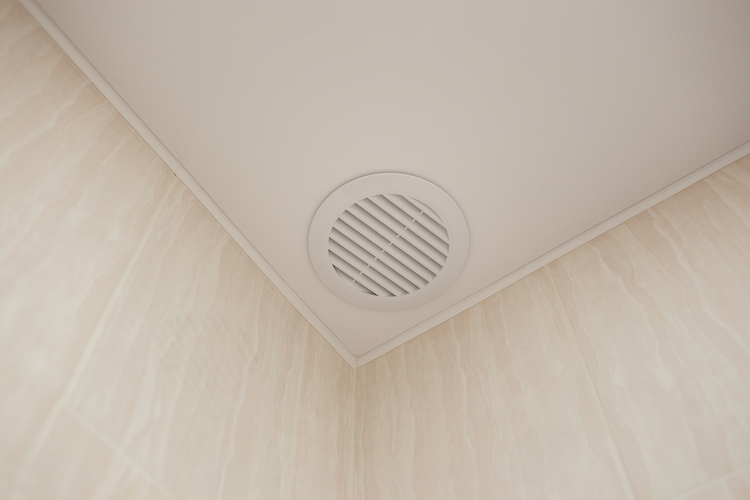
Your bath fan probably isn’t a household object you think about too often. In fact, this might be the first time you’ve wondered about it at all! If that’s you, it’s important to remember: Ventilation in the damp areas of your home (bathtubs, toilets, sinks, etc.) is crucial for the safety of your family, avoiding mold potential, and preventing any damage to the house itself.
Structural and surface-level damage can occur in your bathroom without proper ventilation. Excess humidity can cause cracked paint, peeling wallpaper, and warped cabinetry without using a quality bath fan. If your bath fan cannot effectively eliminate moisture buildup, you could also run into mold growth in your drywall and caulking. This issue affects not only the overall air quality but also the health of your family members. Plus, it’s a comfort issue — as much as a warm shower or bath is enjoyable, no one enjoys a humid space afterward!
The best bathroom fan removes excess moisture effectively, protecting your bathroom from water damage and potential mold buildup. Explore your options for upgrading your bath fan:
The Two Main Types of Bath Fans
Before looking through your bath fan options, deciding which type you’d prefer is essential. There are two main types of ventilation fans: ceiling fans and in-line fans.
Ceiling Bath Fans
You guessed it! Ceiling fans are mounted on the ceiling of a bathroom. The air intake vent sits in the ceiling, with the fan portion directly above it. How does it work? The fan pulls air (and moisture) from the bathroom into the vent by creating suction, and then releases it through the roof vent on the other side.
Many upgraded ceiling fans include lights, some even bright enough to replace an existing vanity light. However, since ceiling fans are directly above the bathroom, homeowners may notice more noise and vibration than they would from an in-line fan.
In-line Bath Fans
In-line fans are typically installed in the attic above the bathroom. Because of this unique setup, in-line fans are quieter with little to no vibration. When choosing to install an in-line fan, the installation location is not constrained by the available space in the ceiling directly above the bathroom. In some cases, this makes it possible to install a larger and more powerful fan than would otherwise fit.
However, installing an in-line fan is much more complex and time-consuming, since ductwork is involved. We don’t recommend attempting your in-line fan installation alone. The expert team at Jason Wright is here to help!
How to Choose the Right Bath Fan for Your Home?
When choosing the best bath fan, it’s important to keep several features in mind: airflow, energy efficiency, versatility, and overall appeal.
- Airflow: As a general rule of thumb, choose a fan with a minimum CFM rating equal to your bathroom’s square footage. For example, choose a 50-CFM-rated fan for a 50-square-foot bathroom and a 100-CFM-rated fan for a 100-square-foot bathroom.
- Energy Efficiency: Fans that are energy efficient use less energy than other models, saving you money on your monthly electric bills and helping the environment!
- Versatility: Many bath fans are designed for more than just your standard ventilation system! Opt for a bathroom fan with an integrated light, motion sensor, humidity sensors, and built-in heaters. These can create a truly luxurious experience!
- Aesthetic: Choose a fan that will coordinate with your space’s style and decor.
Installing Your New Bath Fan
Whether you’re installing a new bath fan where a fixture currently exists or if you’re looking to add a bath fan to your home, several steps are involved. Let us install it for you so you can protect your family and home for years.
The Jason Wright Electric team is your Electrical Concierge! Our entire expert team is here to use our expertise to deliver the highest quality workmanship for your residential ventilation project. Contact us today.
